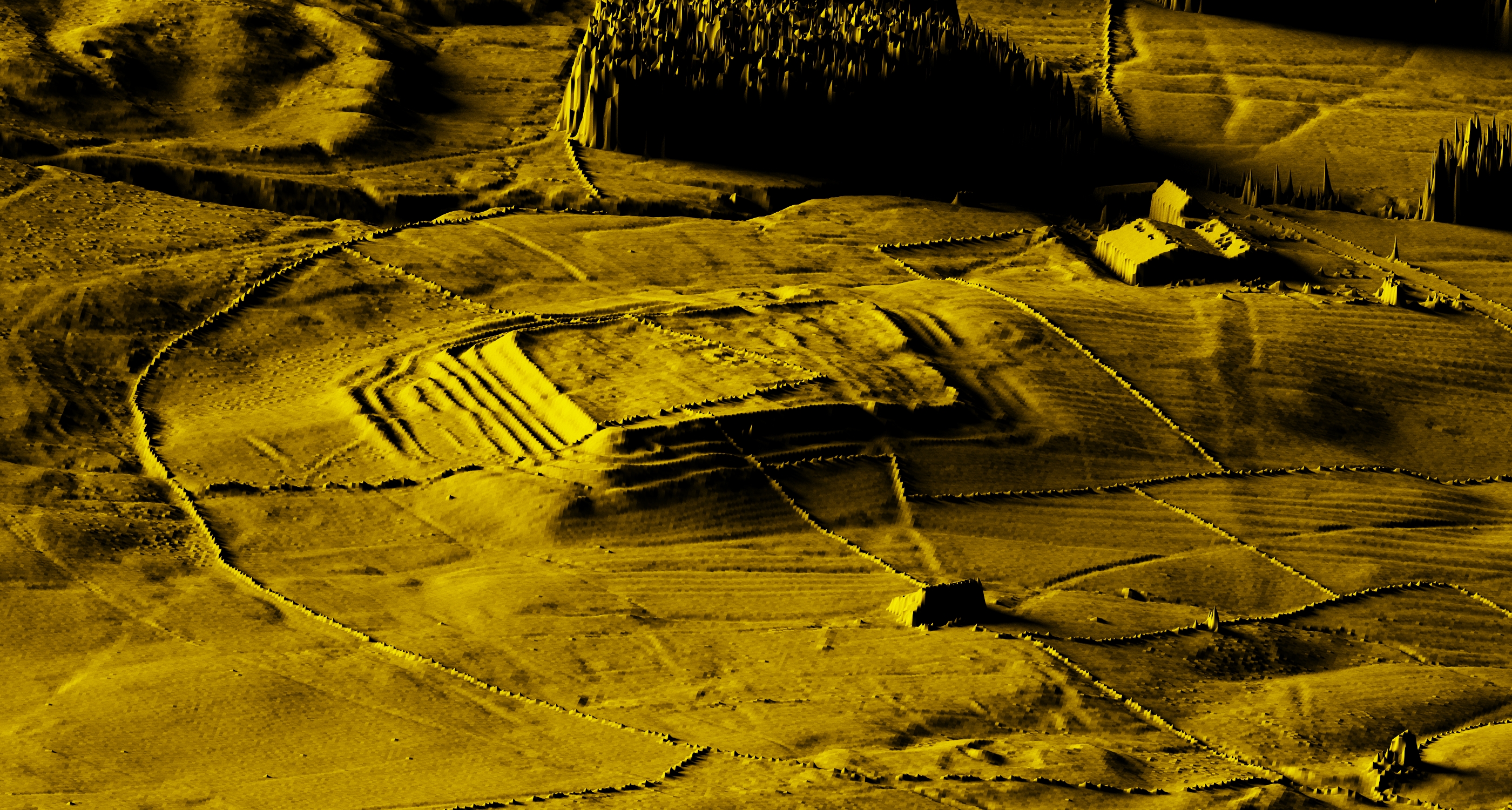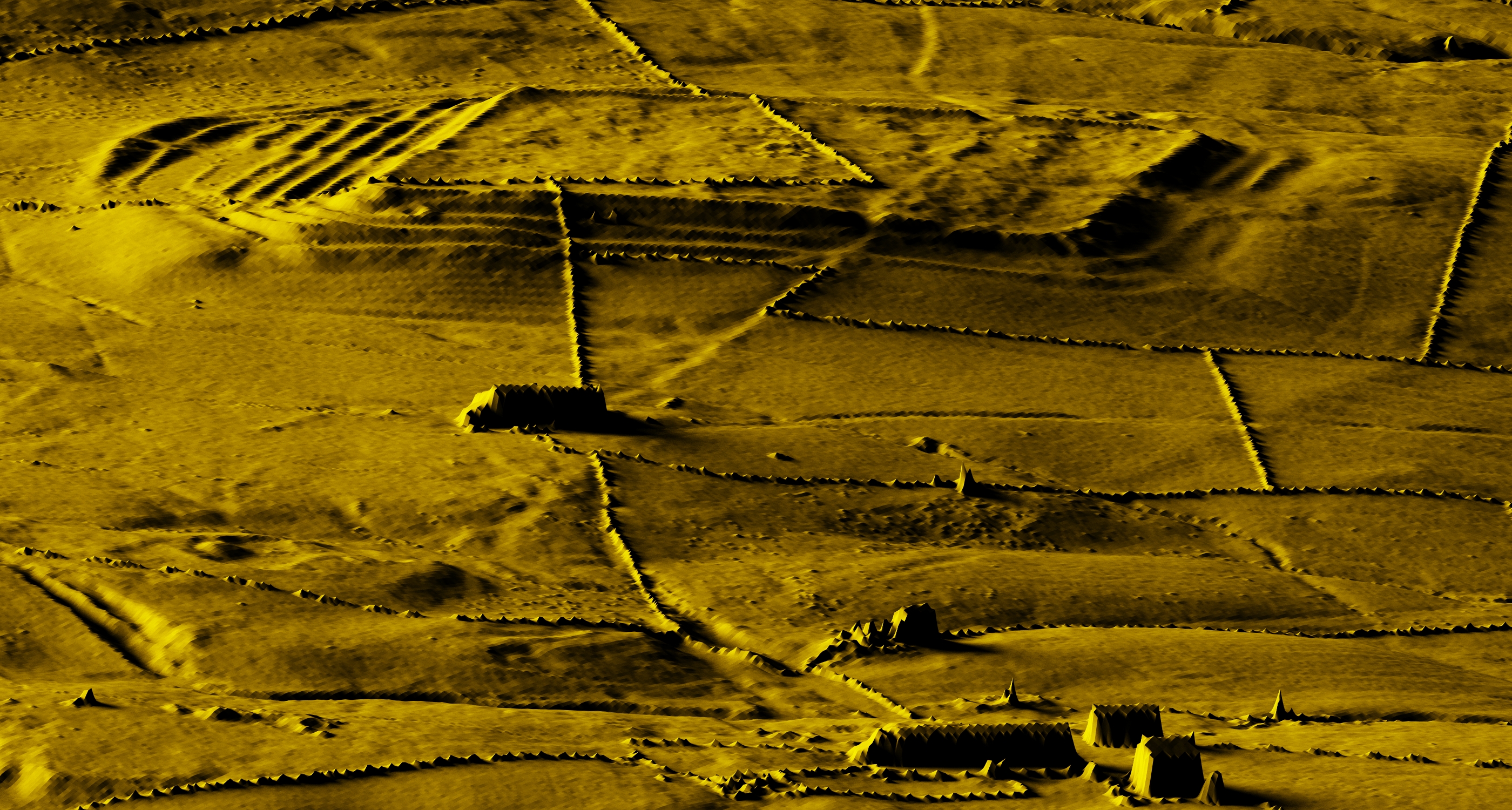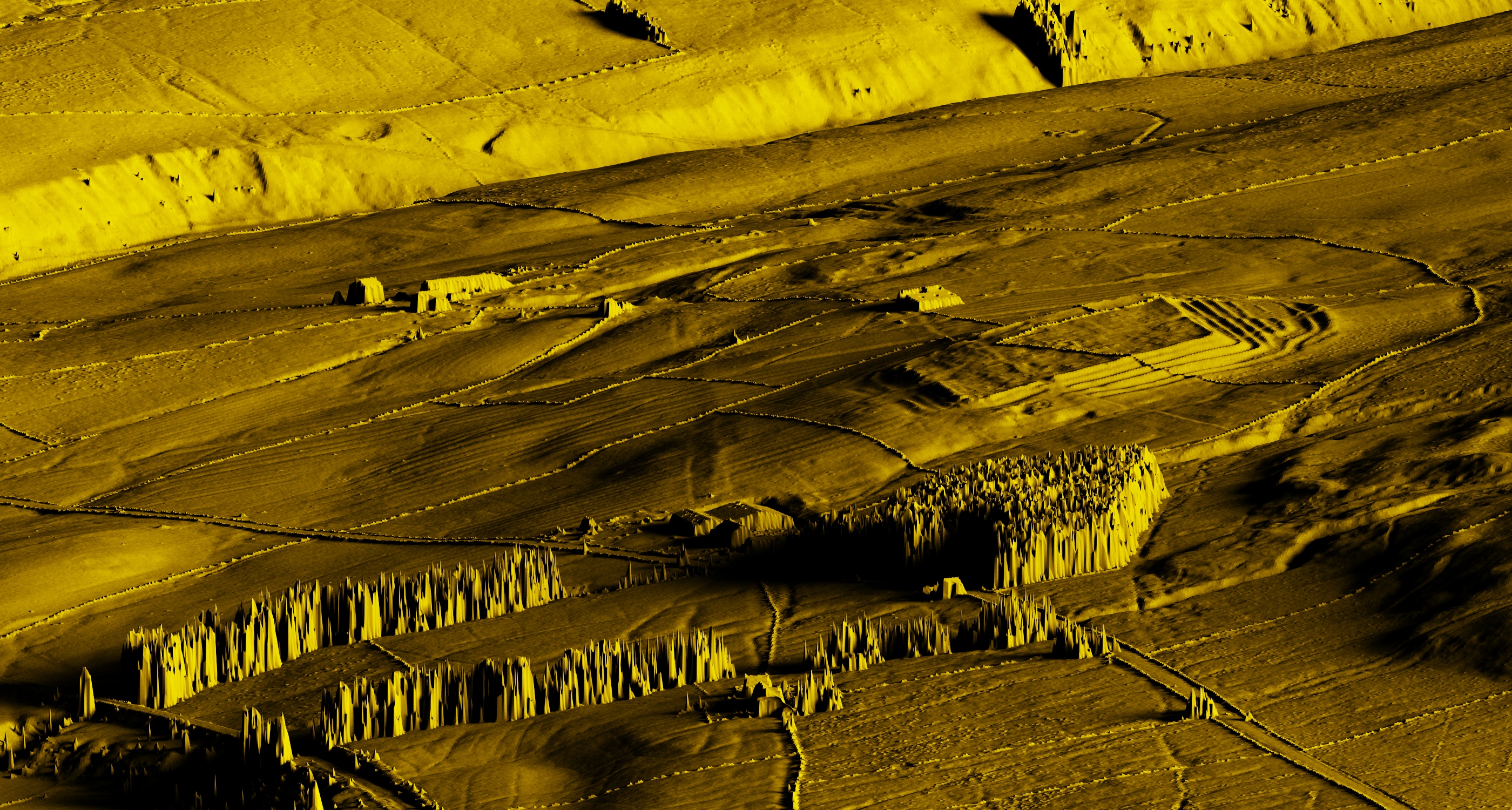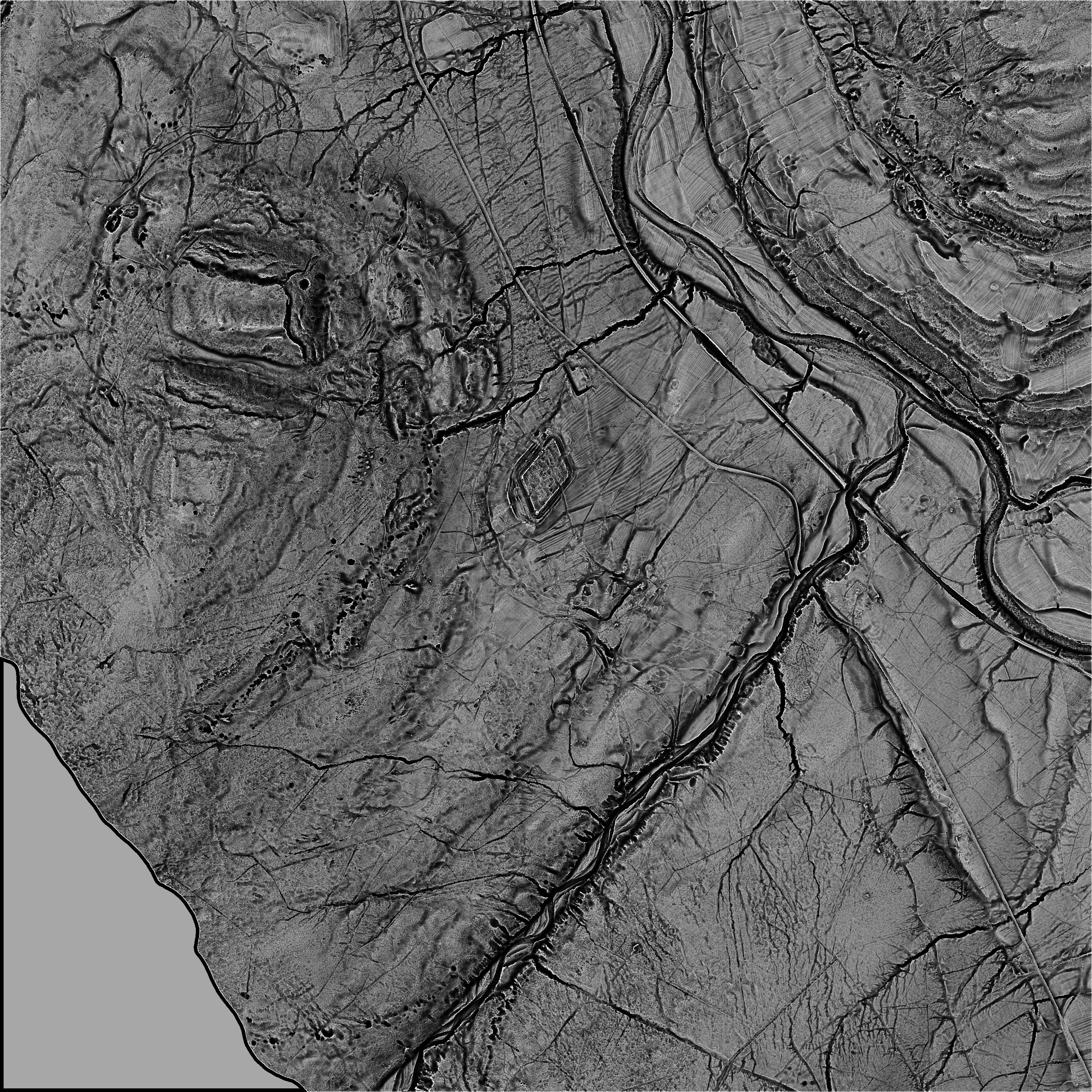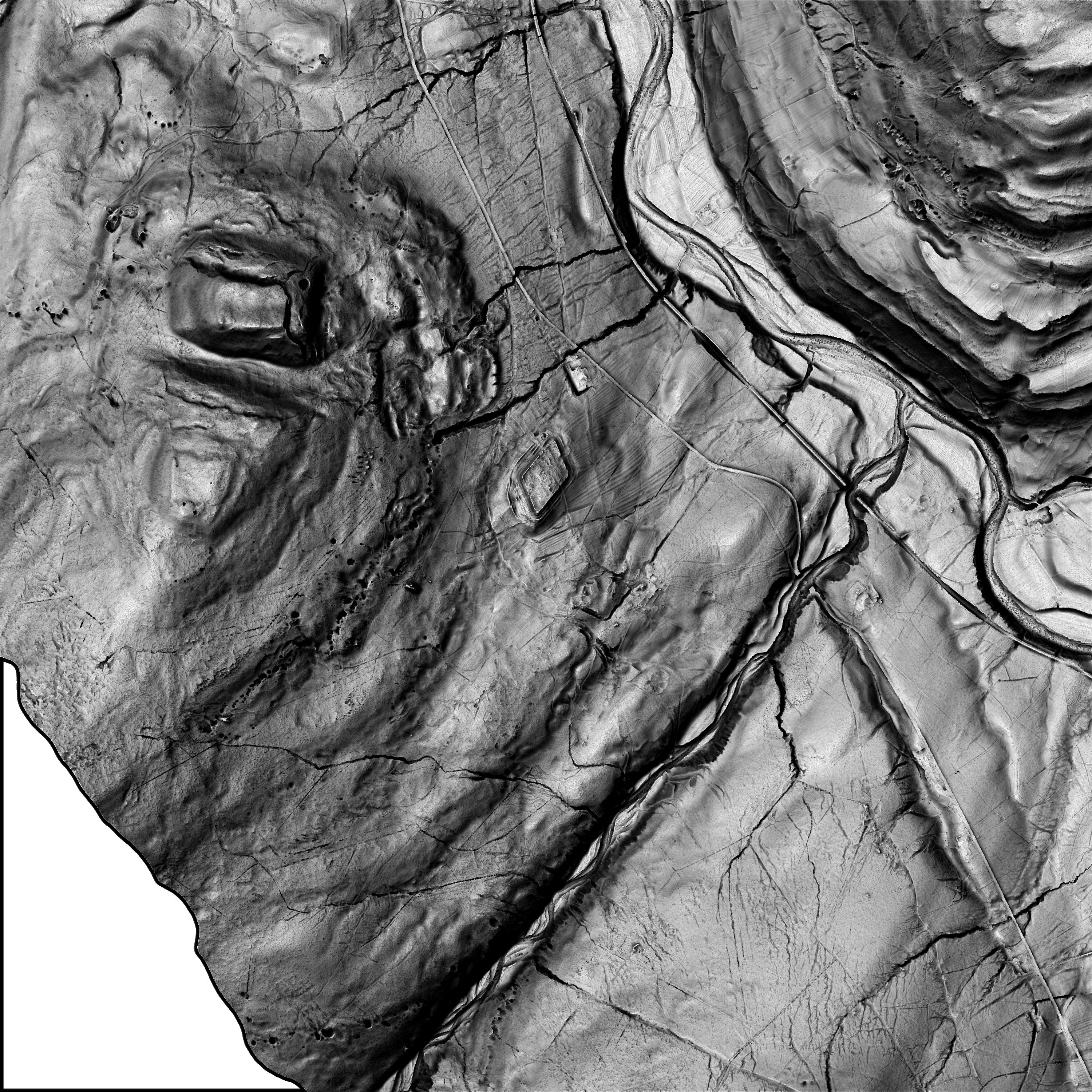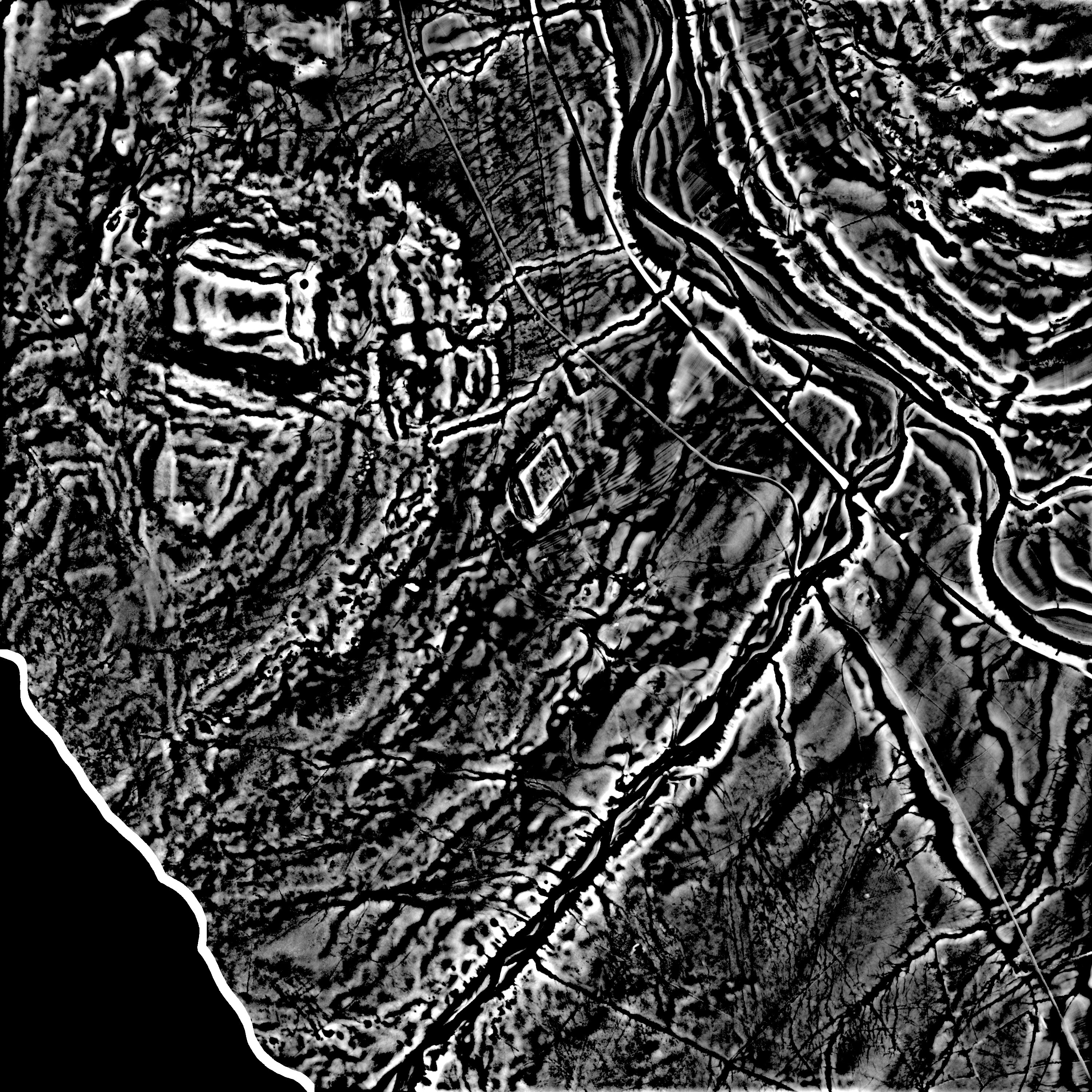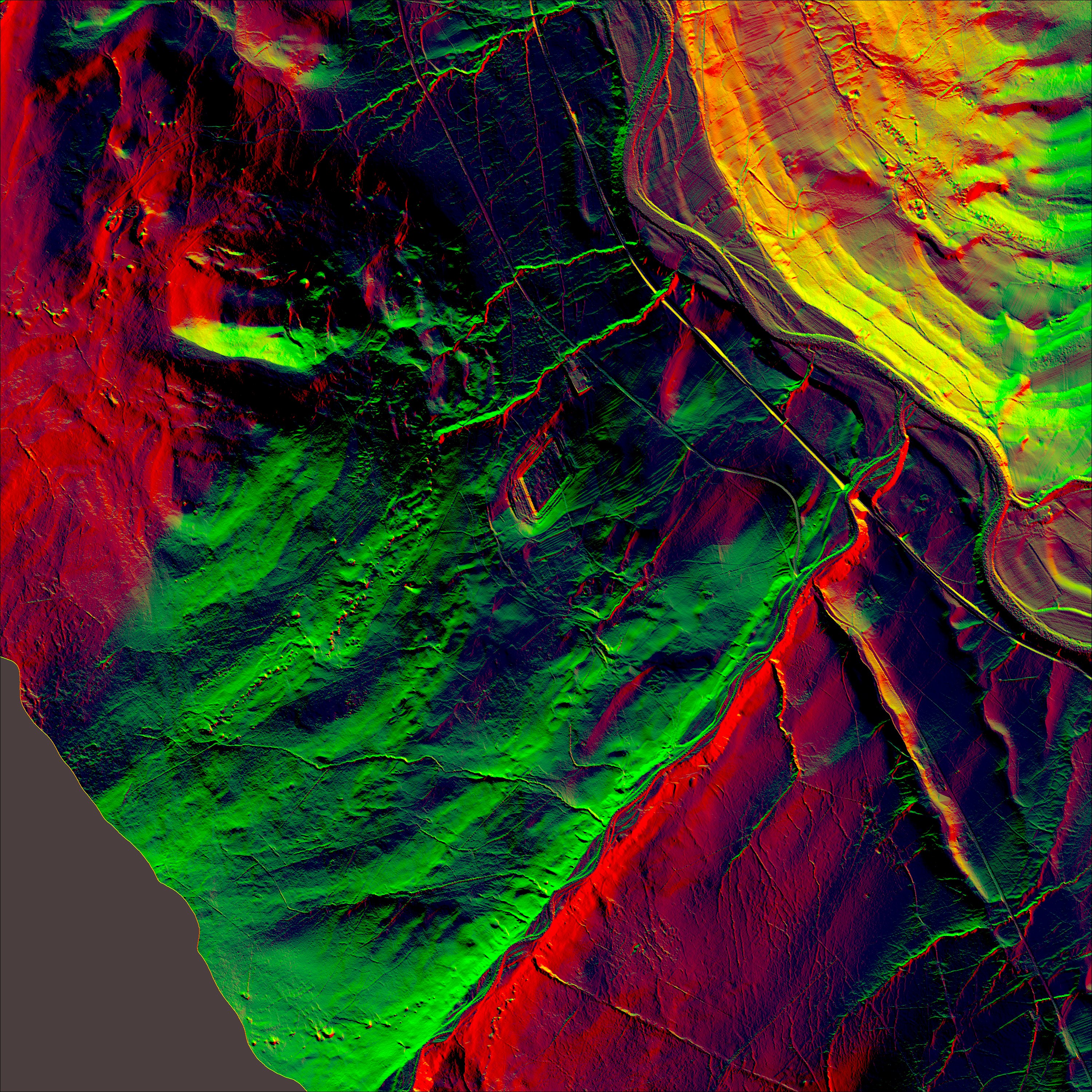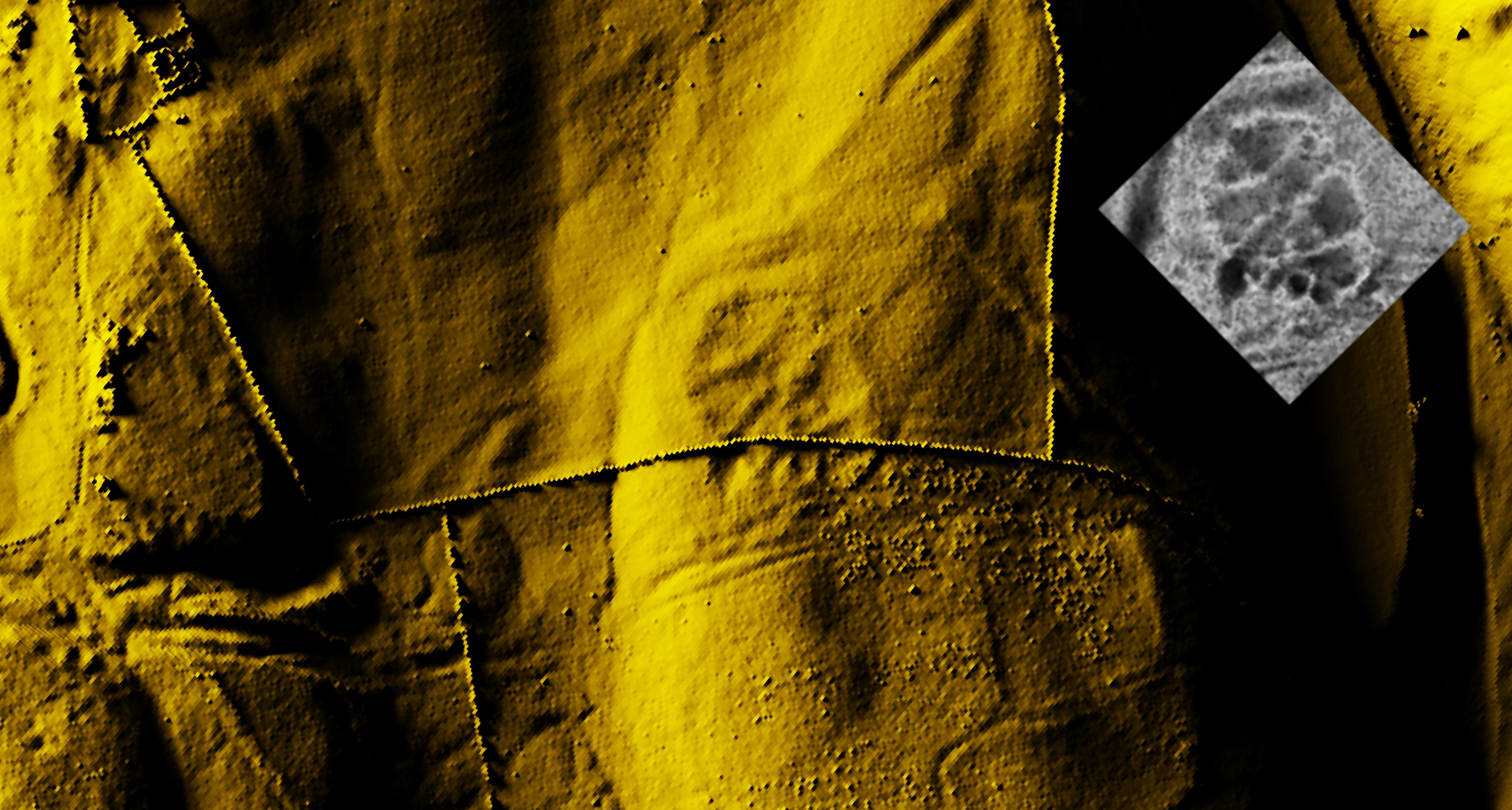|
|
https://www.epiacumheritage.org/
Epiacum's website contains a high resolution Lidar Image (https://www.epiacumheritage.org/research/) specially commisioned from English Heritage and should be viewed in conjunction with this slightly lower resolution Environmental Agency Lidar data.
These are various Lidar derived images of Epiacum Roman fort and use 'pseudo' illumination from differing directions to highlight the 'lumps and 'bumps'.
The images are derived from the publically available Environment Agency Lidar data, in this case the 1m resolution 'Digital Surface Model' (DSM) data showing all items in the landscape and the 1m resolution 'Digital Terrain Model' (DTM) data which removes trees, vegetation, field walls and buildings (Buildings are the flat rectangular structures in the images)
3d Lidar Model
Click on an image to view it in its own page
|
|
|
Scrollable and zoomable location map, courtesy of Bing
|
The following three images use the 'first pulse returned method' of processing (If multiple Laser reflections are received back at the Aircraft due to trees, vegetation etc. then the first received pulse is used thus showing up the taller objects in the landscape). Height: Blue (Low) to Red (High) |
|
As Lidar is all about heights, then Lidar data can be
easlly used to create contours. |
|
|
|
|
|
|
|
|
|
|
|
|
|
|
| The Lidar data is publically available Environment agency 1m DTM
and DSM Lidar Datasets. Processed by Phil Barrett. |
www.castleshawarchaeology.co.uk






